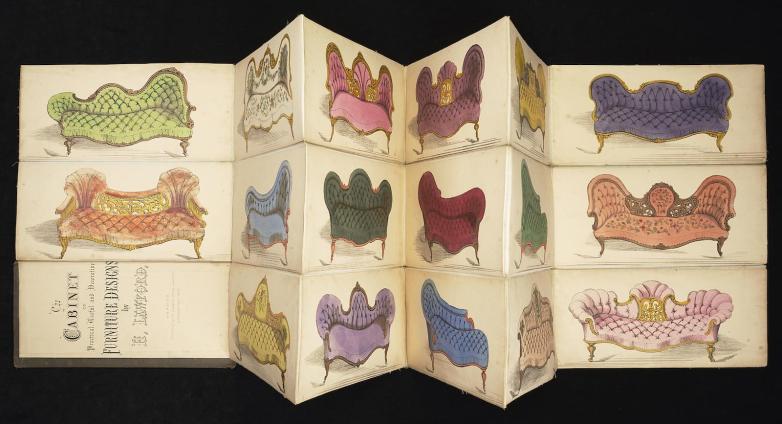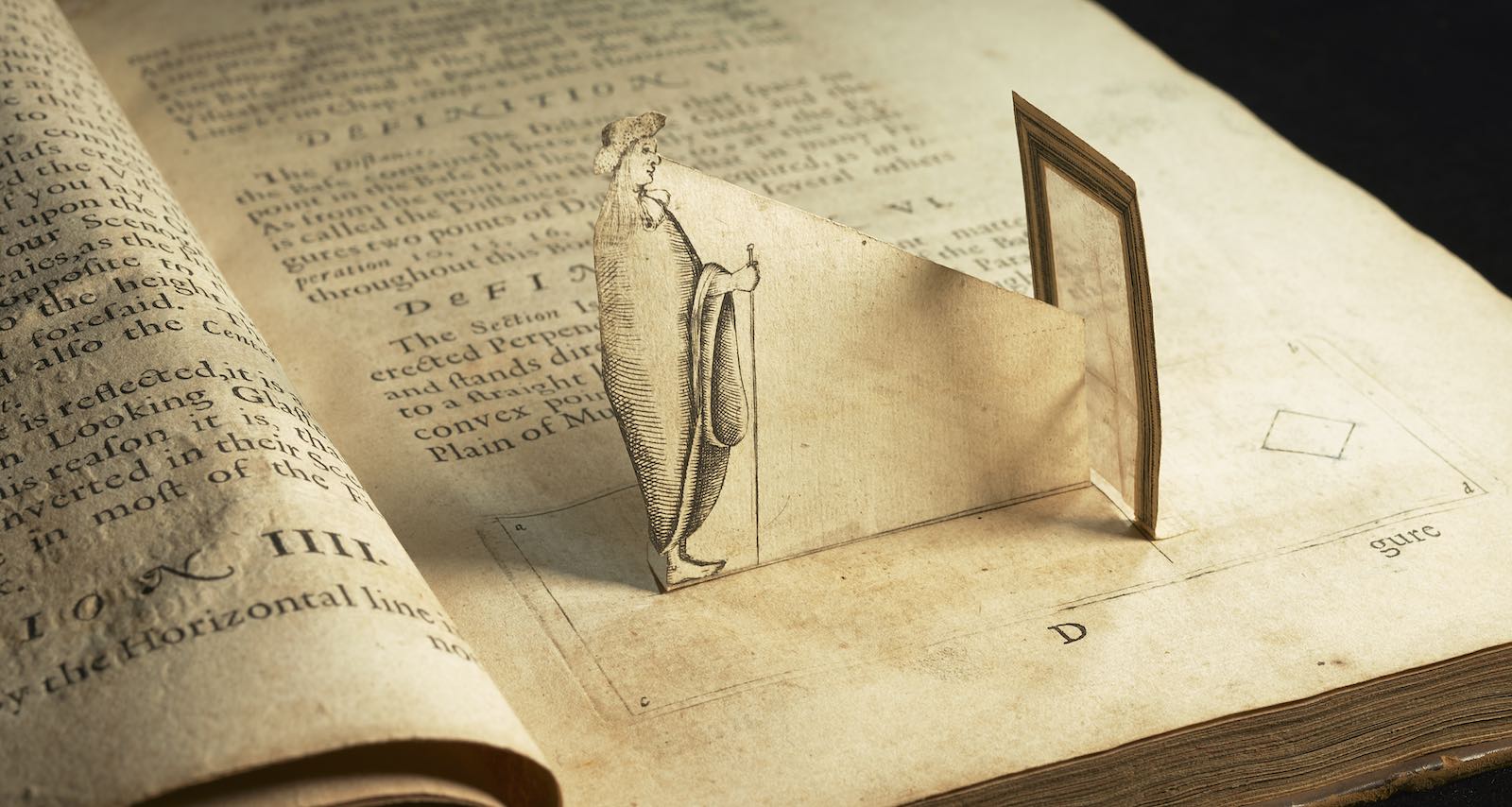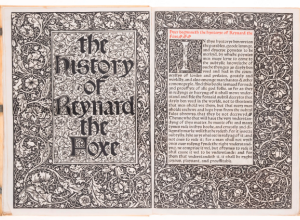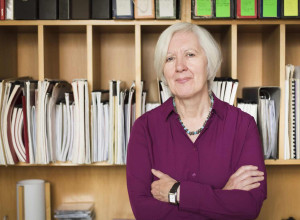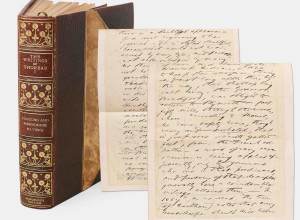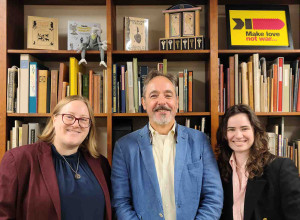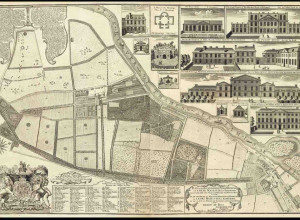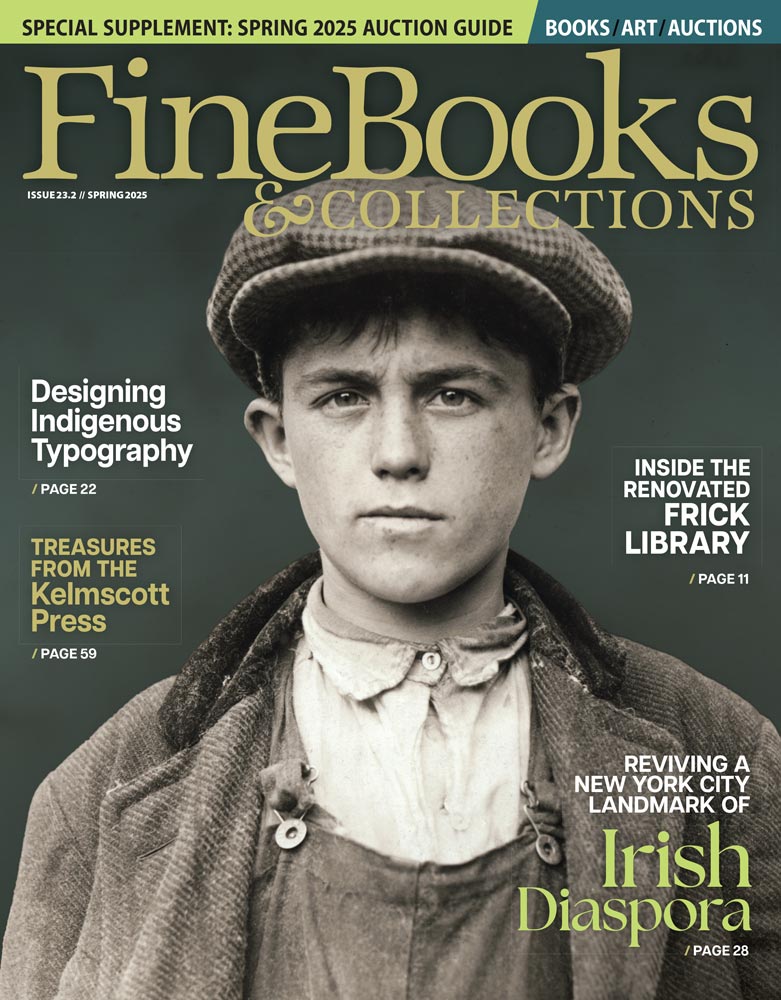Pattern books by the likes of Chippendale and Sheraton appear in the exhibition as key historical texts. Upholsterer and dealer in ‘ancient furniture’ Daniel Thorn is less of a household name, but his personal sketchbook of designs for drapery, curtains and furniture is a lively working record of the fashions of the late-18th and early-19th centuries.
Powerful human stories animate the artefacts with the presence of the people who used and made them. Highlights include:
- a contract from 1728 detailing the apprenticeship of a ‘poor boy' to a tailor and upholsterer under the harsh conditions of the Elizabethan Poor Laws
- Henry Lawford’s gloriously garish 1855 fold-out sofa catalogue which sweeps away the clichés of dismal Victoriana in a colour-lithographed riot of puce, lavender and pea-green
- Horace Walpole’s own copy of the lavish volume describing his villa, Strawberry Hill, that records the role of this eccentric aristocrat in the birth of the Gothic Revival
- coloured plates in Augustus Charles Pugin’s Gothic Furniture which were thought to have been drawn by his 13 year-old son, also named Augustus
By the time of his death in 1852 at the age of just 40, the younger Pugin had become one of the most important creative forces in Victorian Gothic design. Bedford’s copy of the auction catalogue for his great library and collections the following year has buyers’ names and prices noted by hand against each lot.
A 17th century Treatise of Japaning and Varnishing which both responded to and drove the demand for imitation East Asian lacquerware furniture, is one of the most famous texts in furniture history, and Bedford’s copy is displayed in its own original lacquered cover. Dating from almost a century later, The ladies amusement; or, Whole art of japanning made easy was a resource for the hobbyist at home, full of decorative designs for cutting out and pasting on to household items. Bedford’s is the only surviving complete coloured example, and it was among his favourite possessions.
Also on show is an exceptionally rare 16th century book of fanciful designs for furniture by French renaissance tastemaker Androuet Du Cerceau (1511-1586), acquired by the University of Leeds Libraries in 2023 in memory of John Bedford and to complement his bequest.
“The subject of furniture history began to emerge in the 1830s and has since evolved to become a vibrant multifaceted discipline," said co-curator Dr Mark Westgarth, Associate Professor, Art History and Museum Studies and Director of the Centre for the Study of the Art & Antiques Market. "Driven by subject specialists, furniture history has been intimately associated with collecting and furnishing with antique furniture, and with antique furniture dealers such as Bedford. This exhibition shines new light on the themes and subjects that have come to dominate furniture history as a subject, and asks what furniture history might look like in the future.”
Co-curator and Rare Book Specialist Dr Rachel Eckersley added: “As one of the project team I had the pleasure of cataloguing John’s rarest and most precious printed books. We are now in a position to share the riches of John’s collection with the widest possible audience, fulfilling his wish that anyone interested in furniture history should be able to use and enjoy his library.”

